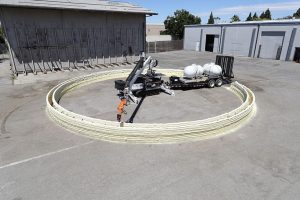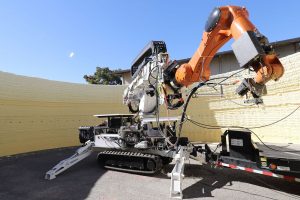Rachel Lee Dynamic Drawing Sketch
/* Rachel Lee
rwlee
Section E
Project-03: Dynamic Drawing */
var outerD = 350;
var innerD = 300;
var hours = 10;
var r = 0;
var g = 0;
var b = 0;
var planetR = 60;
var sunY = 0;
var moonY = 480;
var angle = 0;
var increment = 0.1;
var angle = 0;
var position1 = 0;
var position2 = 105;
var position3 = 65;
var position4 = 215;
var position5 = 25;
var position6 = 345;
function setup() {
createCanvas(640, 480);
}
function draw() {
background(r, g, b);
// top right quadrant yellow according to mouse position
if (mouseX >= 320 & mouseX <= 640 && mouseY >= 0 && mouseY <= 240) {
r = 235;
g = 200;
b = 130;
}
// bottom right quadrant pale blue according to mouse position
if (mouseX >= 320 & mouseX <= 640 && mouseY >= 240 && mouseY <= 480) {
r = 155;
g = 195;
b = 235;
}
// bottom left quadrant dark blue according to mouse position
if (mouseX >= 0 & mouseX <= 320 && mouseY >= 240 && mouseY <= 480) {
r = 30;
g = 115;
b = 185;
}
// top left quadrant navy according to mouse position
if (mouseX >= 0 & mouseX <= 320 && mouseY >= 0 && mouseY <= 240) {
r = 15;
g = 65;
b = 120;
}
// sun rising and setting according to mouse position
if (mouseX >= 330 & mouseX <= 500 && mouseY >= 65 && mouseY <= 415) {
sunY = mouseY;
var sizeSun = map(mouseY, 0, width, 60, 10);
} else {
noStroke();
fill(240, 150, 60);
sunY = 0;
ellipse(560, sunY, planetR, planetR);
}
// drawing sun
noStroke();
fill(240, 150, 60);
ellipse(560, sunY, sizeSun, sizeSun);
// moon rising and setting according to mouse position
if (mouseX >= 150 & mouseX <= 310 && mouseY >= 65 && mouseY <= 415) {
moonY = mouseY;
var sizeMoon = map(mouseY, 0, width, 60, 10);
// drawing stars
push();
translate(100, 100);
rotate(radians(angle));
// animating stars, stars appear when it is 'night time' only
rectMode(CENTER);
noStroke();
fill(210, 240, 245);
rect(position1, 0, 15, 15);
rect(position2, 125, 20, 20);
rect(position3, 300, 10, 10);
rect(position4, 240, 7, 7);
rect(position5, 160, 13, 13);
rect(position4, 270, 9, 9);
pop();
angle = angle + 1;
position1 = position1 + 0.4;
position2 = position2 - 0.1;
position3 = position3 + 0.7;
position4 = position4 - 0.2;
position5 = position5 + 0.1;
position6 = position6 - 0.8;
} else {
noStroke();
fill(230, 230, 190);
moonY = height;
ellipse(80, moonY, planetR, planetR);
}
// drawing moon
noStroke();
fill(230, 230, 190);
ellipse(80, moonY, sizeMoon, sizeMoon);
// clock and hour markers on clock
noStroke();
fill(140, 195, 200);
ellipse(320, 240, outerD, outerD);
fill(180, 225, 225);
ellipse(320, 240, innerD, innerD);
fill(220, 90, 95);
ellipse(320, 110, hours, hours);
ellipse(320, 365, hours, hours);
ellipse(180, 240, hours, hours);
ellipse(450, 240, hours, hours);
// clock hands rotate according to mouse position
stroke(255);
strokeWeight(10);
line(width/2, height/2, mouseX, mouseY); // minute hand
stroke(0);
line(width/2, height/2, mouseX + 40, mouseY + 60); // hour hand
}
For this week’s project, I decided to play with the idea of a clock, and illustrating different times of the day. At first I found it a little tricky to catch syntax errors, but as I built more and more variables in, it became really fun to watch my dynamic drawing come to life in a controlled manner.


![[OLD FALL 2018] 15-104 • Introduction to Computing for Creative Practice](../../../../wp-content/uploads/2020/08/stop-banner.png)




